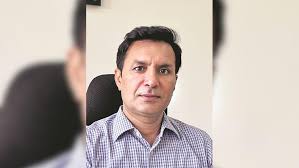Private capex not showing robust signs of revival, says MPC’s Ram Singh

New Delhi | June 25, 2025 —
Despite India’s steady economic growth and macroeconomic stability, private sector capital expenditure (capex) remains subdued, according to Monetary Policy Committee (MPC) member Ram Singh. Speaking at a policy roundtable on Tuesday, Singh highlighted that private investment is yet to show convincing signs of revival, even though broader indicators such as GDP, tax collections, and industrial output are on an upward trajectory.
This candid assessment from a top monetary policymaker throws light on a critical challenge facing the Indian economy — reviving private capex, which is essential for long-term, sustainable growth.
Mixed Signals from the Economy
India’s economy has displayed remarkable resilience in the face of global economic turbulence. The country recorded a 7.2% GDP growth rate in FY2024–25, supported largely by strong government expenditure, robust domestic consumption, and buoyant services sector performance.
However, Ram Singh noted that the private sector has not yet responded with a corresponding uptick in capital investments, a trend that continues to puzzle policymakers.
“While macroeconomic fundamentals remain sound and financial conditions are largely supportive, the private capex cycle is yet to gather broad-based momentum,” Singh remarked.
He acknowledged that though certain industries — such as renewable energy, infrastructure, and digital technology — have seen sporadic investment activity, a full-fledged revival across the board is still missing.
Private Sector Caution Amid Uncertainty
According to Singh, multiple structural and cyclical factors may be holding back private investment. These include global geopolitical tensions, rising input costs, and persistent concerns around demand sustainability.
“Risk aversion continues to dominate boardroom decisions. Many companies prefer to wait and watch rather than commit to large-scale capital deployment,” Singh observed.
The cautious behavior is further evident from recent data. According to CMIE (Centre for Monitoring Indian Economy), new project announcements by the private sector in the first quarter of 2025 have remained flat, while capacity utilization in key manufacturing sectors hovers around 73–75%, below the 80% threshold generally considered ideal for triggering new investments.
Healthy Corporate Balance Sheets, But Little Spending
Interestingly, Indian corporates are financially better placed today than they were in the aftermath of the COVID-19 pandemic. Corporate balance sheets have deleveraged significantly, and profits in sectors like auto, banking, and FMCG have returned to pre-pandemic levels.
Still, Singh emphasized that financial health alone isn’t translating into capital expenditure. He noted that although interest rates remain elevated compared to pre-COVID levels, they are not prohibitively high.
“The issue is not one of affordability, but confidence — particularly in the stability of demand and clarity of the business environment,” Singh explained.
Public Capex Leading the Way
In contrast to the private sector, the government has been aggressively pushing capital expenditure. The Union Budget for FY2025–26 raised capital spending by 11% year-on-year, with a focus on roads, railways, and housing. States have also ramped up infrastructure-related spending, leveraging higher GST collections and central transfers.
This has created a “crowding-in” effect, where public investment is expected to eventually spur private investment by improving infrastructure, logistics, and connectivity.
But Singh cautioned that relying solely on government-led growth is not a viable long-term strategy.
“Private sector participation is crucial for achieving the next phase of economic expansion. Government spending can only go so far in driving growth and job creation,” he said.
Sectors Poised for a Turnaround
Despite the overall muted picture, there are signs of optimism in specific sectors. The renewable energy space has attracted both domestic and foreign capital, with companies announcing significant investments in solar, wind, and green hydrogen projects. Similarly, the real estate sector is showing signs of revival in tier-1 cities, supported by steady demand and improved regulatory transparency under RERA.
The electronics and semiconductor segments have also drawn attention after the government’s Production-Linked Incentive (PLI) schemes. Singh pointed out that these green shoots need to be nurtured through consistent policies, simplified compliance norms, and predictable taxation.
What Needs to Be Done?
Experts agree that reviving private capex will require a mix of macroeconomic and sector-specific interventions. Stable inflation, a clear interest rate outlook, and robust financial market conditions are prerequisites. In addition, the government may need to accelerate structural reforms in areas such as land acquisition, labour laws, and contract enforcement.
Enhancing ease of doing business, reducing bureaucratic red tape, and streamlining approval processes can also boost investor confidence.
Singh emphasized that public-private dialogue and policy clarity are essential to bridging the trust deficit.
“A revival of private investment will not happen automatically. It needs to be facilitated through policy consistency, stakeholder engagement, and removing friction points in the investment lifecycle,” he said.
Conclusion: The Path Ahead
Ram Singh’s candid observation about the lagging revival in private capex brings into focus a critical area of concern. India may be one of the fastest-growing major economies, but to sustain this growth over the next decade, a vibrant and confident private investment cycle is indispensable.
While the public sector has laid the foundation with increased infrastructure spending, it is ultimately the private sector that must pick up the baton. For that to happen, companies need visibility on long-term demand, policy stability, and confidence in the regulatory environment.
Until then, the recovery story may remain incomplete.






